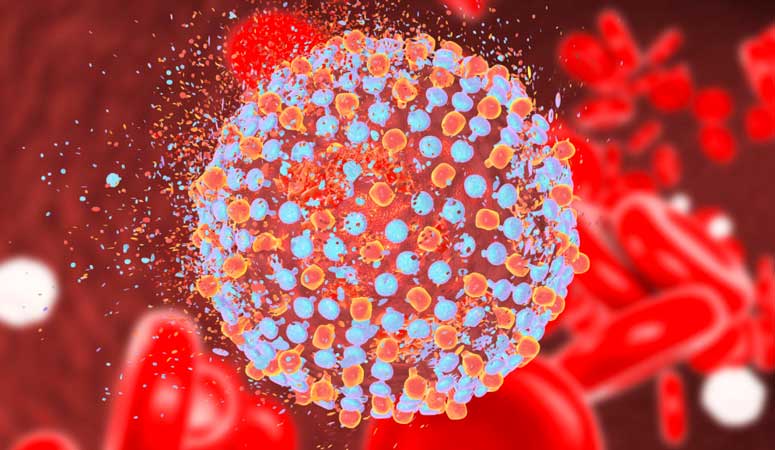Causes and Risk Factors

Hepatitis C is caused [4] by the HCV virus. People often get infected via blood-to-blood contact with infected blood. Blood that contains HCV must penetrate the body of an individual without HCV for transmission to occur.
There are thousands of hepatitis C viral specimen present in a drop of infected blood. The viral particles are invisible to the naked eye and can be very hard to kill.
If getting clean and sterile syringes is hard, the CDC provides guidance on how to clean syringes to avoid transmission. While bleach could destroy the HCV present on syringes, it may, however, not have as much result on other instruments. The amount of HCV may be decreased by boiling, heating, using peroxide, alcohol, or other effective cleaners to wash equipment, but it does not prevent a person from getting infected.
Injecting chlorine, using disinfectant, or other effective cleaning materials is extremely harmful, so make sure to thoroughly rinse the syringe. If it is impossible to get new and sterile syringes/equipment, use bleach only for cleaning equipment.
An individual can not get infected [5] with the virus from casual touch, kissing, breathing, hugging, or sharing food. No data suggests that the virus can be transmitted through mosquito bites.
The following risk factors for developing hepatitis C are reported by the CDC [6]:
● Blood transfusion or organ transplants received prior to 1992, which is before lab tests blood test became available
● Bing on dialysis for an extended period of time
● Making use of injectable drugs, which is easily the most effective pathway for infection in the U.S.
● Birth to a woman with hepatitis C
● being exposed to a dirty needle, which is most prevalent in health care workers,
Although the risk is minimal, individuals may also contract hepatitis C through the following:
● Sexual relation with others without the use of protection, particularly anal or rough sex, which is more likely to cause blood-to-blood interaction
● Invasive treatments in healthcare, such as injections
● Sharing things that may have blood on them and aid contact, such as razors or toothbrushes
● Unregulated/unsafe tattooing
Currently, the leading position among the routes of infection is occupied by drug addiction with intravenous (parenteral) administration of drugs. According to WHO statistics, 87.5% of injecting drug users have antibodies to HCV.













